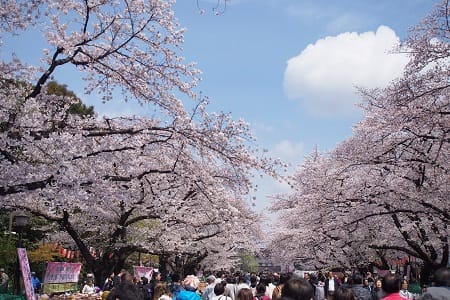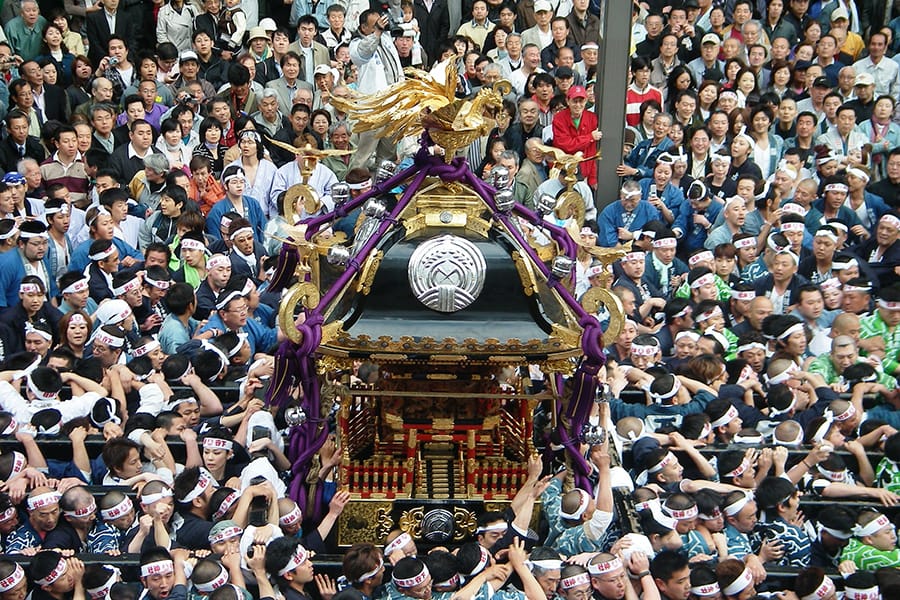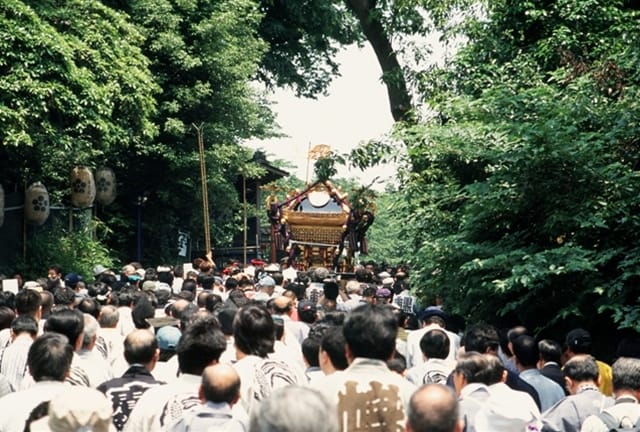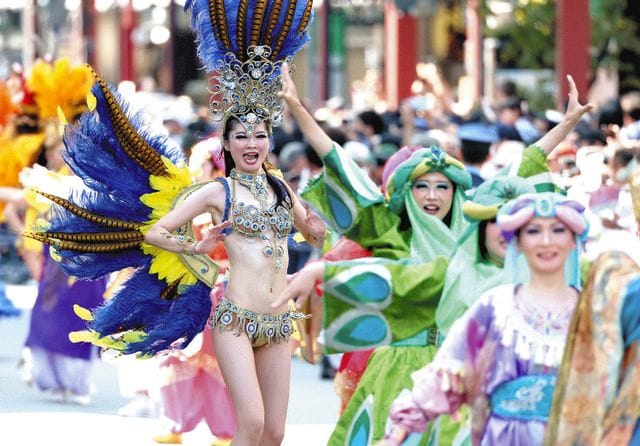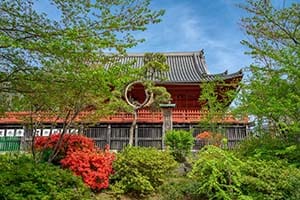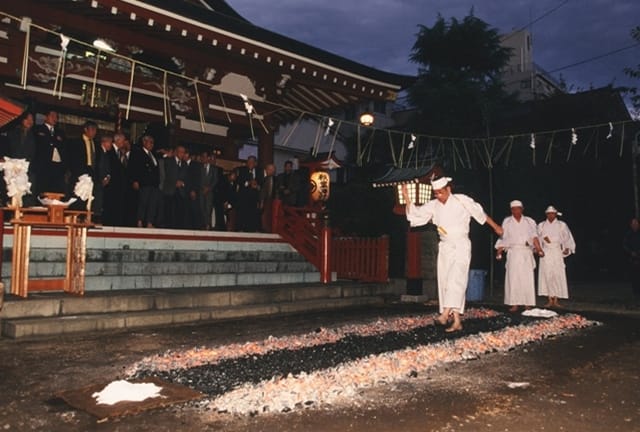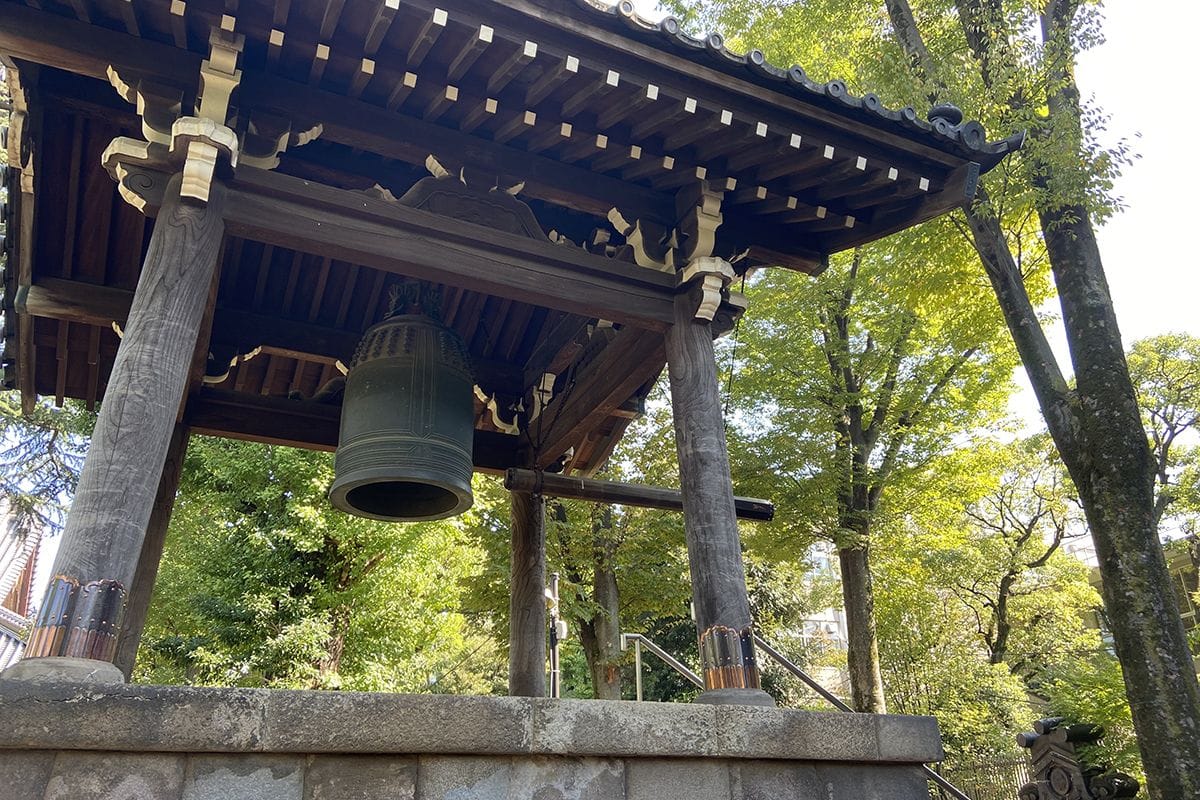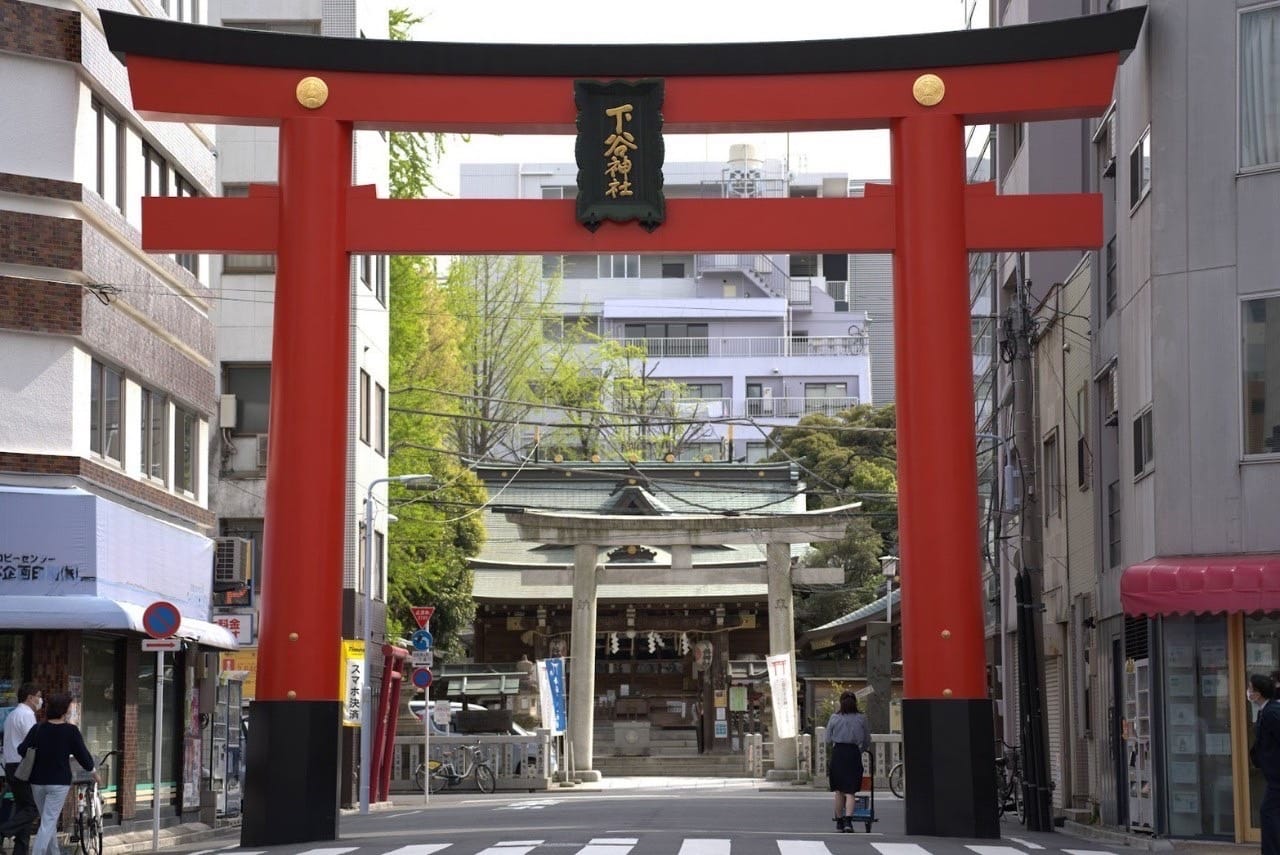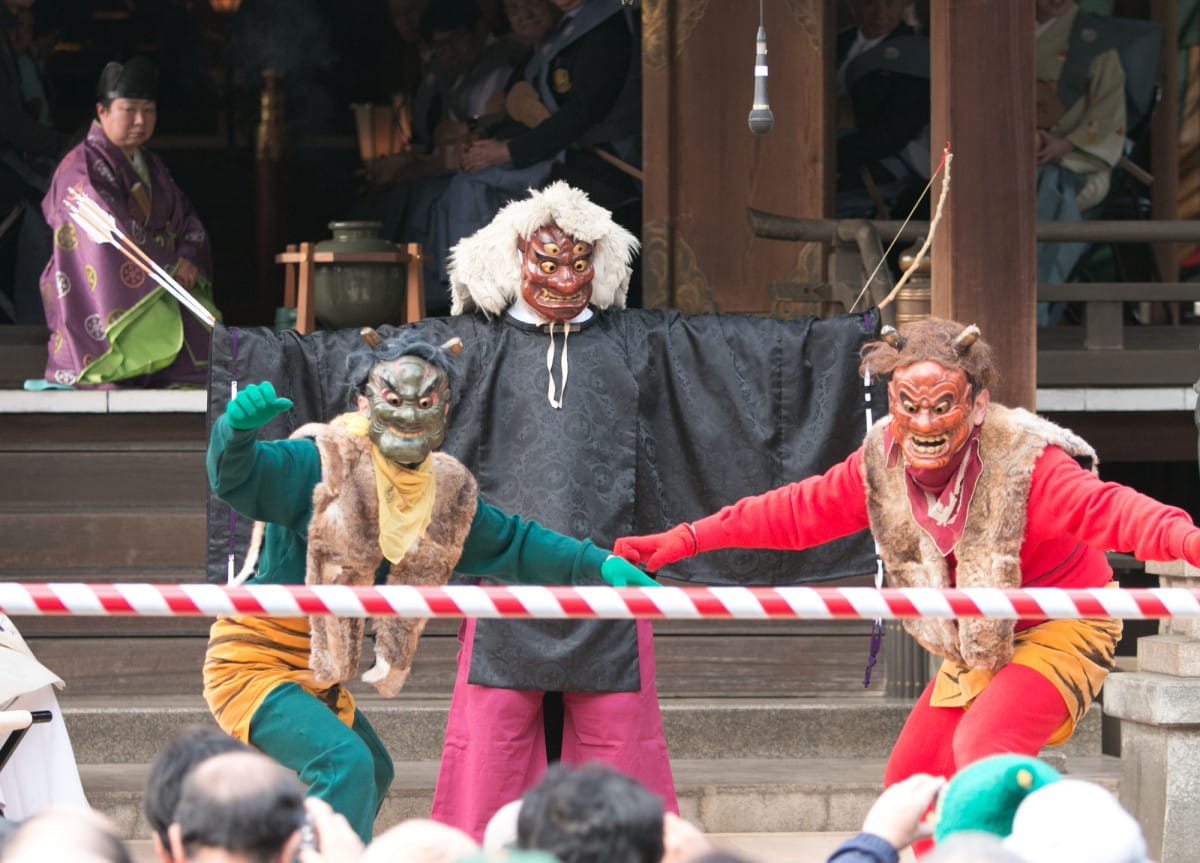Ueno is a district located in Taito Ward, Tokyo, and is popular among tourists as a base for sightseeing. It's an area packed with tourist attractions, including Ueno Zoo, the National Museum, Ameyoko, Ueno Park, and the drinking district under the elevated tracks. There are so many attractions concentrated in this small area that it's impossible to cover them all in a single day.
Another reason for its popularity is its excellent accessibility. The Shinkansen (bullet train) stops here, making it easy to travel to and from other regions. It's also just a 6-minute train ride from Asakusa, another major tourist destination in Tokyo, making it a great starting point for visiting other attractions.
Moreover, with prestigious institutions like Tokyo University of the Arts and the University of Tokyo nearby, Ueno has the aspect of being a hub for "culture, art, and academia." It also retains the atmosphere of an old-fashioned Japanese downtown area. Ueno is a deeply fascinating district that shows many different faces to visitors.
In this article, we'll introduce 11 traditional events that allow you to experience the aspect of Ueno where "Japanese traditional culture is preserved," organized by season.
Ueno Hosts Numerous Long-Standing Traditional Events and Festivals
Ueno is a district that carefully preserves traditions, located near Asakusa, another area that strongly retains traditional Japanese streetscapes with landmarks like the Kaminarimon Gate. Ueno is particularly famous for its seasonal traditional events, with many held in the spacious Ueno Park that allow visitors to experience Japan's four seasons and rich nature.
In this article, we'll introduce 11 traditional events passed down in Ueno, including those held outside Ueno Park, organized by season. We hope you'll find events that interest you and decide to attend!
Introduction to Traditional Events and Festivals in Ueno by Season
Traditional Events and Festivals Held in Ueno during Spring
Ueno Cherry Blossom Festival (Ueno Sakura Matsuri)
Source: Taito City Official website
The Ueno Cherry Blossom Festival, one of Ueno's traditional festivals / matsuri 2024, is a spring tradition held in Ueno Park where about 800 cherry trees bloom magnificently. Visitors can enjoy the cherry blossoms and numerous events.
The history of cherry blossoms in Ueno dates back 400 years when cherry trees were planted on the grounds of Kaneiji Temple during its establishment. Since then, Ueno has become renowned as a cherry blossom viewing spot, not just in Japan but internationally.
In Japan, there's a culture called "hanami," where people spread sheets under cherry trees and have parties. This tradition has continued in Ueno for over 400 years, and even now, many visitors come for hanami during the festival period.
One of the highlights of this festival is the night cherry blossom viewing. When the cherry blossoms are near full bloom, they are illuminated at night. The sight of countless small white flowers floating in the vast darkness of night is breathtaking. We recommend visiting for an evening stroll.
<Information>
Date: Typically about 3 weeks from mid-March to late April
Access: 3 minutes walk from JR Ueno Station
3 minutes walk from Keisei Ueno Station on the Keisei Line
5 minutes walk from Ueno Station on the Tokyo Metro Line
Admission: Free
Website: https://ueno.or.jp/sakuramatsuri2023/
Spring Peony Festival
Source: Official website
The Spring Peony Festival is an event held at the Ueno Toshogu Peony Garden where visitors can enjoy over 500 peony plants of 110 varieties.
Peonies have a long history in Japan, introduced from China about 1300 years ago as medicine and gradually becoming loved as ornamental flowers. About 400 years ago, they were as beloved as cherry blossoms, Japan's national flower, and were very familiar to Japanese people.
The Ueno Toshogu Peony Garden opened in 1980 after World War II as a symbol of peace to commemorate Japan-China friendship. During the Spring Peony Festival, peonies from not only China but also America and France bloom magnificently.
Everywhere you look in the garden, beautiful peonies are in bloom. The Japanese garden zone is particularly attractive. Please enjoy the vibrant colors of the peonies amidst the serene scenery created by rocks, sand, and greenery.
<Information>
Date: Early April to early May
Access: 5 minutes walk from JR Ueno Station Park Exit
10 minutes walk from Nezu Station on the Tokyo Metro Chiyoda Line
Admission: Adults (junior high school and above) 1000 yen
Groups (15 or more) 800 yen
Elementary school students and younger free
Website: https://uenobotanen.com/schedule/spring/
Traditional Events and Festivals Held in Ueno during Summer
Shitaya Shrine Grand Festival
Source: Official website
The Shitaya Shrine Grand Festival is a traditional event that has been passed down for over 1000 years at Shitaya Shrine, which has about 1300 years of history. Today, it's loved by many people, both domestic and international, as the earliest summer festival in Tokyo.
The main highlight of the Shitaya Shrine Grand Festival is the "procession of the main shrine mikoshi." A "mikoshi" is a portable shrine in the shape of a small house that carries a deity, and the procession involves people carrying the mikoshi and parading around the vicinity, a custom found throughout Japan.
This festival is conducted on such a large scale that 6000 bearers take turns carrying the mikoshi around the city. If you watch it up close, you can feel the excitement. The chants of the bearers are so powerful that you can feel the vibrations in your body, naturally raising your spirits.
While the festival is held annually, the procession of the main shrine mikoshi only takes place once every two years. The next one will be in 2026, so please take note. However, even in years without the main shrine mikoshi, the festival is full of attractions like small mikoshi and food stalls, so please drop by if you're visiting Japan in May.
<Information>
Date: Around May 11th
Access: 6 minutes walk from JR Yamanote Line Ueno Station
2 minutes walk from Inaricho Station on the Ginza Line subway
5 minutes walk from Shin-Okachimachi Station on the Oedo Line
2 minutes walk from Shitaya Shrine-mae bus stop on the Toei Bus
Admission: Free
Website: https://shitayajinja.or.jp/event/
Gojo Tenjin Shrine Grand Festival
Source: TAITO Odekake Navi
Gojo Tenjin Shrine has about 1900 years of history, and various events are held throughout the year. Among these, the most important event is the "Gojo Tenjin Shrine Grand Festival" held every year on May 25th.
On the day of the festival, a procession of mikoshi parades through the streets to the sounds of traditional Japanese flutes and drums, and chants. The procession is so long that you can't see the end from the front, and it's packed with various Japanese traditions, making it interesting and enjoyable to watch from any angle.
For example, if you focus on the clothing, you'll notice that there are various styles and atmospheres of kimono, which might pique your interest. You can also enjoy being overwhelmed by the excitement emanating from the mikoshi bearers or admiring the beauty of people dressed in elegant kimonos.
<Information>
Date: May 25th
Access: 3 minutes walk from "Keisei Ueno Station" on the Keisei Main Line and Narita Sky Access
5 minutes walk from "Ueno Station" on the JR Yamanote Line, Utsunomiya Line, JR Joban Line (Ueno-Toride), JR Takasaki Line, JR Keihin-Tohoku Line, Ueno-Tokyo Line, Tokyo Metro Ginza Line, Tokyo Metro Hibiya Line
10 minutes walk from "Ueno-Hirokoji Station" on the Tokyo Metro Ginza Line and Toei Oedo Line
Admission: Free
Website: https://www.gojoutenjinsha.com/
Ueno Summer Festival 2024
Source: WALKER PLUS
The Ueno Summer Festival is a cooling festival (nouryou-sai) held in Ueno for about a month every summer. Nouryou-sai is a traditional Japanese custom that originated about 1000 years ago, where various events are held in each region to forget the harsh summer heat.
During the Ueno Summer Festival period, events are held somewhere every day, and the whole town is in a festive mood.
In 2024, the "Lotus Viewing Deck Rinrin Corridor" was held. This event featured 2000 "wind chimes," small bells that produce cool sounds.
Another aspect of this festival that we especially want you to enjoy is the food stalls. Eating and walking while drinking cold beer by the cool, breezy pond side is the best way to forget the summer heat.
<Information>
Date: Mid-July to early August
Access: About 1 minute walk from JR "Ueno" Station
About 1 minute walk from Keisei Line "Keisei Ueno" Station
About 5 minutes walk from Toei Oedo Line "Ueno-Okachimachi" Station
Admission: Free
Website: https://ueno.or.jp/summerfes2024/
Traditional Events and Festivals Held in Ueno from Late Summer to Autumn
Asakusa Samba Carnival
Source: Tokyo Shinbun
The Asakusa Samba Carnival is the largest samba carnival in the Northern Hemisphere, attracting over 500,000 visitors each year. It's held in the Asakusa district, within walking distance from Ueno.
Asakusa has always been a town where people who love new things and lively atmospheres gather. The character of Asakusa's people and samba were a perfect match, and it quickly grew into a summer tradition.
The samba you can enjoy at this event is called "desfile," which is a "street opera" that progresses while parading. The lively and bright samba is much more enjoyable and exciting to experience in person than watching on video, as you can feel the energy of the performers.
The carnival includes a serious competition with a league system where performers compete for rankings. Pay attention to their refined movements as well.
<Information>
Date: One day between late August and early September
Access: 5 minutes walk from "Asakusa Station" on the Tokyo Metro Ginza Line, Toei Subway Asakusa Line, Tobu Skytree Line, and Tsukuba Express
Admission: Free
Website: https://www.asakusa-samba.org/
Ueno no Yama Cultural Zone Festival
Source: TAITO City Official website
The "Ueno no Yama Cultural Zone Festival" is the collective name for numerous cultural and artistic events held on Ueno Hill every autumn. Autumn has long been called the "season of art" in Japan because there are few annual events, the climate is pleasant, and people's hearts are relaxed, making it perfect for enjoying art. This event is perfect for enjoying the "season of art."
One of the most popular events in the Ueno no Yama Cultural Zone Festival is hosted by Kaneiji, an ancient temple. Visitors can enter rooms that are usually closed to the public and the mausoleums of former shoguns, or tour places in Ueno Park associated with Kaneiji, guided by a monk.
There are also many other events, including guided tours of Ueno Hill, lectures, exhibitions, and concerts.
<Information>
Date: September to November
Access and Admission: Varies by event, please check the details on each event page
Website: https://www.culture.city.taito.lg.jp/ja/cultural_fes/2023
Traditional Events and Festivals Held in Ueno during Winter
Fire-walking Ritual (Akiba Shrine)
Source: TAITO Odekake Navi
The fire-walking ritual is a traditional event that has been held at Akiba Shrine for 540 years. Believe it or not, in this event, worshippers walk barefoot on red-hot charcoal.
The fire-walking ritual has been performed to pray for the suppression of both physical fire and the fire of the heart (a metaphorical expression referring to the rise of emotions). In modern times, when opportunities to use fire have decreased due to electricity, it helps people physically recognize the fearfulness of fire that tends to be forgotten, and understand the importance of suppressing the fire of the heart such as desire, jealousy, anger, envy, and grudges.
Also, the red light floating in the darkened shrine grounds emanates a mysterious power that is both beautiful and frightening.
While the fire-walking ritual is conducted with sufficient safety precautions, it is a custom that involves danger. Anyone can participate for free, but please listen carefully to the instructions of the staff and follow the rules strictly when participating.
<Information>
Date: One day in early December
Access: Aoi Transportation Momoyamadai Bus
1. Board at "Kasugai Station Front" on the Aoi Transportation Bus
2. Get off at "Fukugonji-mae"
Admission: Free
* It is customary to put some coins in the "offertory box"
Website: https://akiba.fukugonji.com/
Tōeizan Kan'ei-ji Temple "New Year's Eve Bell Ringing"
Source: Rurubu
"New Year's Eve Bell Ringing" is a traditional Japanese custom where temple bells are rung on the night of December 31st, just before the new year begins. In Japan, it has been believed since ancient times that humans have 108 worldly desires (emotions that cause suffering), and the bell is rung 108 times to rid oneself of each of these desires one by one. (There are various theories about this.)
Kan'ei-ji Temple is famous for this New Year's Eve bell-ringing custom, and people come from far away to hear the sound of Kan'ei-ji's bell. When the New Year's Eve bell was first broadcast on radio, the sound of Kan'ei-ji's bell was chosen.
Another attractive point is that anyone can experience the New Year's Eve bell ringing at Kan'ei-ji. Advance reservation is required, but sometimes there are still openings until the day of the event.
It's better to make a reservation early, but don't give up even if it's last minute. Try making a reservation!
<Information>
Date: December 31st
Access: 10 minutes walk from Uguisudani Station
Admission: Free (3000 yen to ring the New Year's Eve bell)
Website: https://kaneiji.jp/schedule#gsc.tab=0
Shitaya Shrine Year-End Great Purification
Source: Official website
The Year-End Great Purification (toshikoshi ooharai) is an event held at shrines throughout Japan to prepare for the new year, and it's also held at Shitaya Shrine.
In Japan, there has been a concept of "kegare" (impurity) since ancient times, which refers to impurities that adhere to the body due to death, illness, or immoral acts. The Year-End Great Purification is a ritual performed to "purify" (remove from the body) these impurities before the year changes, rather than carrying them over to the next year. This allows people to welcome the new year with a refreshed feeling.
It's also said that when "kegare" is attached to the body, one cannot perform at their best. Therefore, participating in the Great Purification is said to help one understand what they should do, make correct judgments, and turn their life around for the better.
<Information>
Date: December 31st
Access: 6 minutes walk from JR Yamanote Line Ueno Station
2 minutes walk from Inaricho Station on the Ginza Line subway
5 minutes walk from Shin-Okachimachi Station on the Oedo Line
2 minutes walk from Shitaya Shrine-mae bus stop on the Toei Bus
Website: https://shitayajinja.or.jp/event/
Ukera Ritual
Source: TAITO Odekake Navi
The Ukera Ritual is an event held annually on Setsubun (February 3rd) at Gojo Tenjin Shrine to pray for good health and safety (mubyousokusai) throughout the year. While events are held in various places on Setsubun, the Ukera Ritual is a valuable event that has inherited a traditional form that has continued for over 1000 years.
In the Ukera Ritual, a story unfolds where an oni (demon, which is considered a symbol of disease and disaster in Japan) appears and is defeated. Although it's a ritual, it can be enjoyed as a performance.
During the ceremony, "ukera burning" is also performed. This is a custom of burning plants of the Asteraceae family, which is also done to intimidate the oni.
If you're interested in Japanese culture related to warding off evil spirits, please come and visit.
<Information>
Date: February 3rd
Access: 3 minutes walk from "Keisei Ueno Station" on the Keisei Main Line and Narita Sky Access
5 minutes walk from "Ueno Station" on the JR Yamanote Line, Utsunomiya Line, JR Joban Line (Ueno-Toride), JR Takasaki Line, JR Keihin-Tohoku Line, Ueno-Tokyo Line, Tokyo Metro Ginza Line, Tokyo Metro Hibiya Line
10 minutes walk from "Ueno-Hirokoji Station" on the Tokyo Metro Ginza Line and Toei Oedo Line
Admission: Free
Website: https://www.gojoutenjinsha.com/%E5%B9%B4%E9%96%93%E8%A1%8C%E4%BA%8B/
Many Traditional Events and Festivals are also Held in Asakusa, Which Belongs to the Same Taito Ward as Ueno
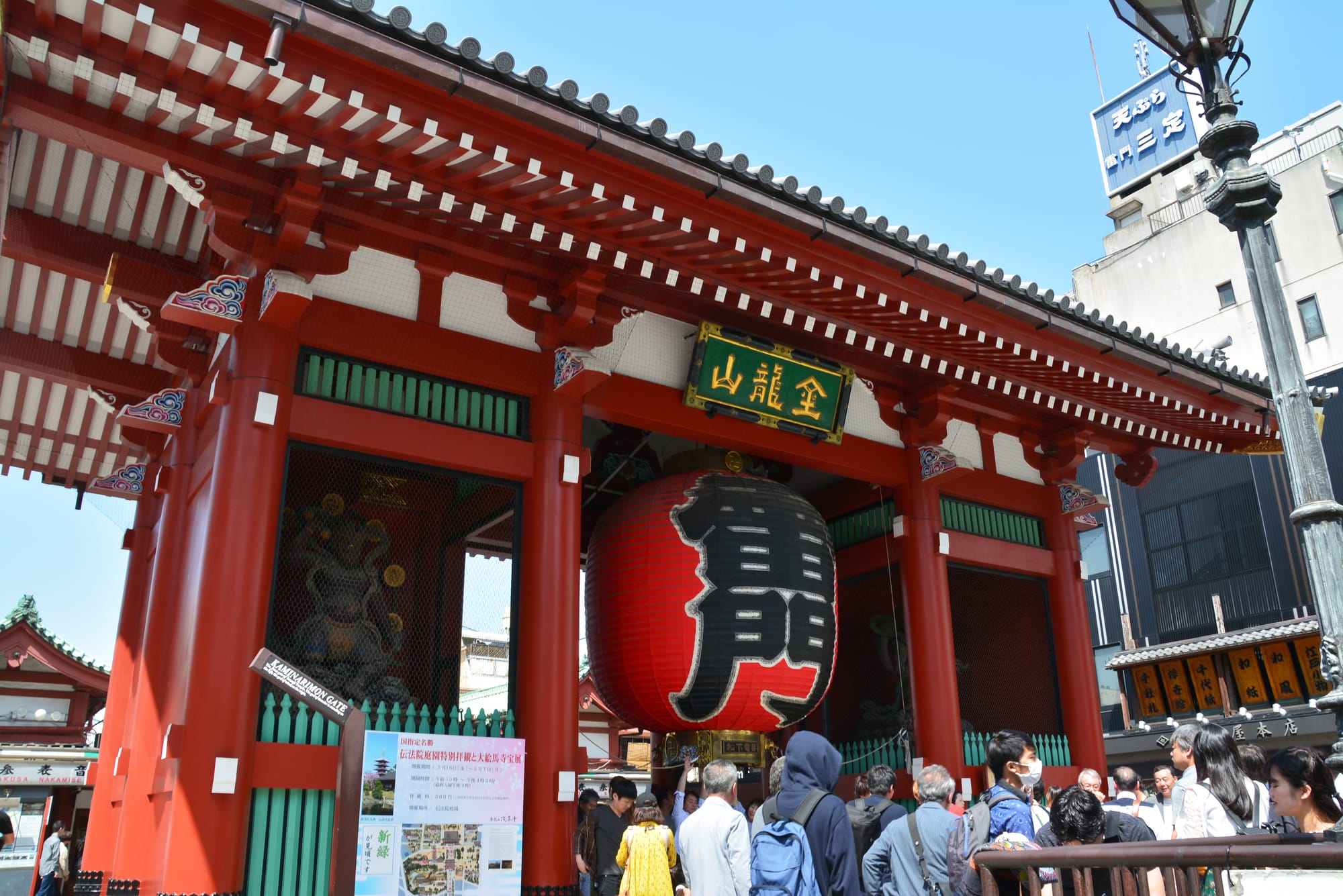
In Asakusa, the neighboring town about a 6-minute train ride from Ueno, numerous traditional festivals are also held. The "Asakusa Samba Carnival" we introduced earlier is one of them.
Asakusa is a place that strongly retains the atmosphere of a traditional Japanese town, famous for tourist spots like "Kaminarimon Gate" and "Sensoji Temple." It's a place where you can feel like you've traveled back in time, with many tourists dressed in kimono sightseeing.
In such a town that preserves the old-fashioned charm, many traditional festivals rooted in the community are held. There are also festivals that attract people from all over the world, like the "Sumida River Fireworks Festival," so please do visit!
As you can see, Ueno and its surrounding areas offer a rich tapestry of traditional festivals / matsuri 2024, providing visitors with unique opportunities to experience authentic Japanese culture throughout the year.


